Related Tags
How reforestation efforts led to the Taylor 700 Series’ uniquely beautiful Hawaiian koa
The koa found in Taylor’s new 700 Series is the result of an equally unique supply situation, one tied directly to the brand’s extensive sustainability work.
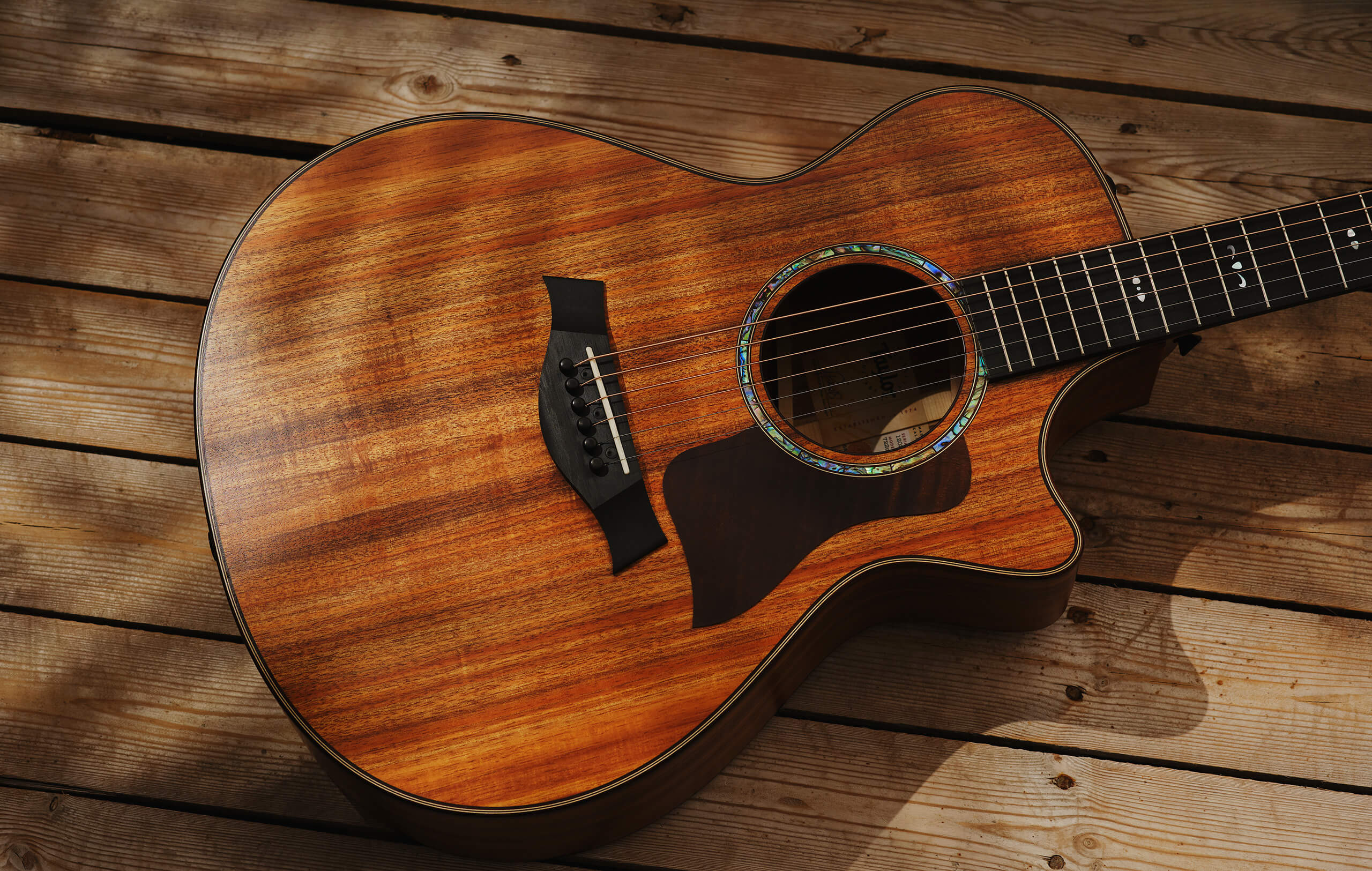
Ad Feature with Taylor Guitars
Given the ecological challenges surrounding Hawaiian koa, you might think that Taylor introducing two new models almost completely made of the stuff is folly – but thanks to new sustainability ventures, the future of the wood is looking a lot brighter than ever.
We spoke to both Jim Kerlin, the editorial director of Taylor’s Wood And Steel blog, and Andy Powers, Taylor’s (newly appointed) chief guitar designer, CEO and president, to find out more about just what’s behind the brand’s sustainability pledges – and the unique nature of the koa found in the 700 Series.
There are many ways to address the sustainability issue, but perhaps none quite as direct as Taylor’s approach. In 2015 it partnered with Pacific Rim Tonewoods for a new joint venture – Siglo Tonewoods. However, the plan was much more than just to establish a new distributor for koa, as Jim explains: “Our vision was to help restore native Hawaiian forests and grow koa to create an enduring supply of wood for musical instruments well into the future.
“We adopted an innovative stewardship contracting approach that was first implemented by the US Forest Service and The Nature Conservancy, which addressed the significant costs associated with forest restoration.
“Instead of paying a landowner for logs or harvesting rights, Siglo would be allowed to cut a select number of koa trees from a compromised forest area and in exchange would invest the dollar-for-dollar value of that wood into forest improvement projects on that land.”
Essentially, the partnership is a huge investment in expanding and greatly strengthening Hawaiian koa forests. Now, seven years later, we’re seeing the fruits of that investment – the 722ce Grand Concert and the 724ce Auditorium, both with bodies made entirely out of koa.
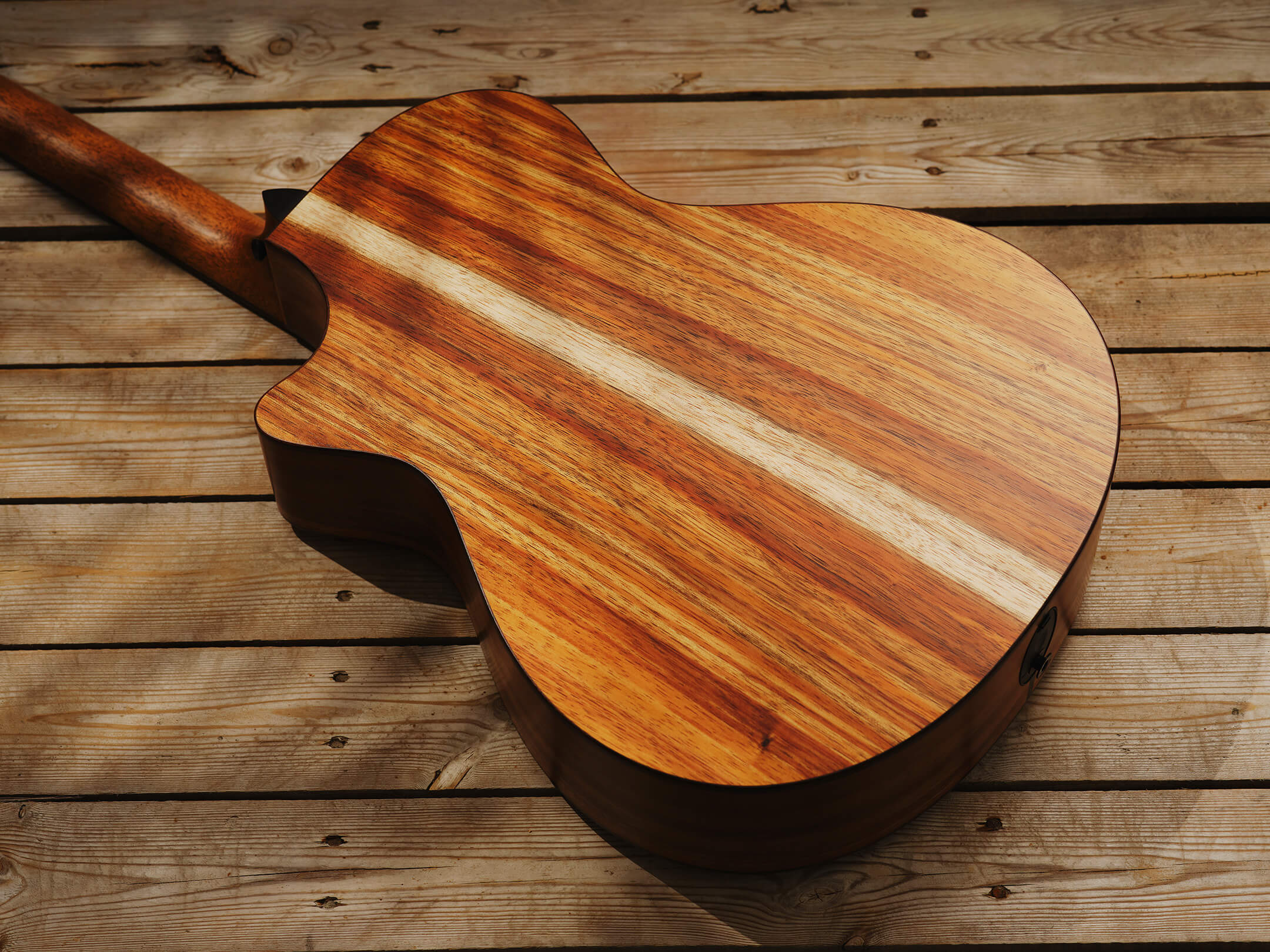
You might notice that even compared to other koa guitars, the grain seen here is strikingly characteristic, a happy accident as a result of Siglo Tonewoods’ unique circumstances. “Through that direct arrangement, we’ve been able to cut into more koa logs ourselves, and in the process, discover wood with a broader range of colours and visual character than we’d previously encountered in dealing with suppliers,” Jim tells us.
Powers adds: “In the past, we were familiar with the wood that sawyers offered us, but we didn’t get to see all that a Hawaiian forest could provide. We would typically see the extreme end of the koa wood spectrum – the outrageous, highly figured koa since that is the timber many sawyers would target for guitars, while most other koa trees were directed toward other uses. Once we began working closer to each log and could see all of these beautiful hues, it felt as exciting as the first time we realised ebony could have variegated colour. The reality is that a lot of fantastic-sounding koa wood comes from trees that don’t have deeply figured grain.”
A connection to the wood
So how exactly is this koa different to that which Taylor has used in the past? “In contrast to the super figured koa we’ll use for our Koa Series, this koa is more straight-grained. It’s similar to the genetic variable that makes some hair curly, some wavy and some straight,” Jim explains.
The straighter grain isn’t just an aesthetic quirk – it changes how the wood works acoustically and structurally, something Powers took into account when designing the new 700 Series. “Andy was inspired to treat this koa in a different way and design an all-solid-wood koa guitar with a distinctive aesthetic and musical personality compared to our existing Koa Series, which conveys a rich, luxurious aesthetic,” Jim tells us.
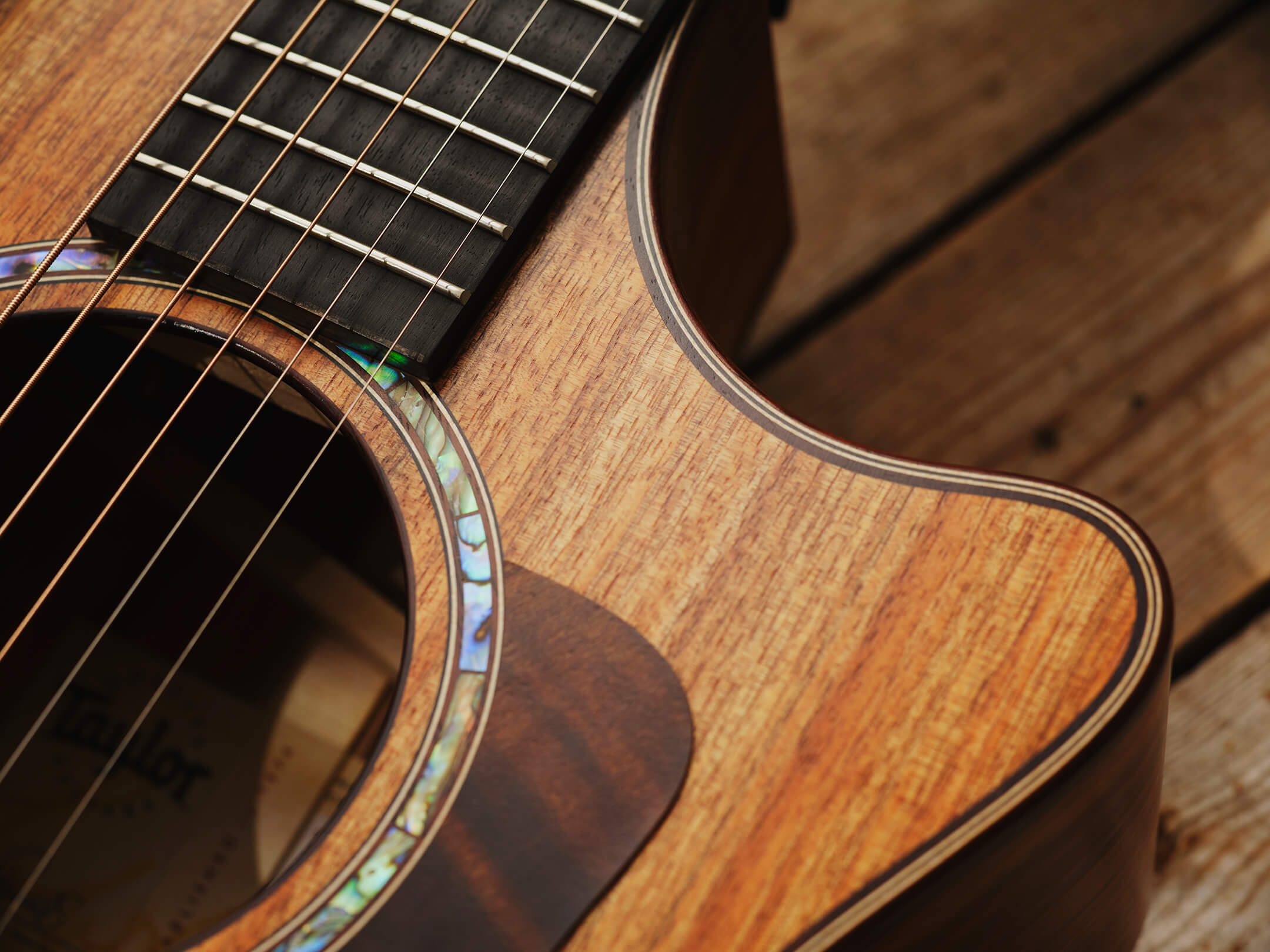
“Those Koa Series guitars were voiced to reflect this ultra-refined, polished, smooth aesthetic,” Andy adds. “They’re rich and sweet – I was thinking about this guitar from the outside in. I wanted to start by focusing on a tactile connection to the wood to emphasise the directness of the response – when you touch the body, you can feel the actual wood texture, the grain structure, the pores. There’s less between the player and the wood, to such a degree that the player feels the warmth of the wood surface.”
Brace yourselves
Bracing is, of course, an incredibly important part of acoustic guitar design – and in designing around the new koa, Andy Powers’ signature V-class bracing was also tweaked to suit the wood.
“The beauty of Andy’s V-Class bracing is that it provides a voicing platform that can be modified in different ways based on the guitar’s body shape or tonewoods to better differentiate each model’s musical personality,” Jim says. “And it goes beyond just the bracing – it’s really a combination of factors that work together as part of the overall voicing recipe. It starts, of course, with the natural properties of the wood itself. In this case, Andy made some subtle modifications to the back bracing.”
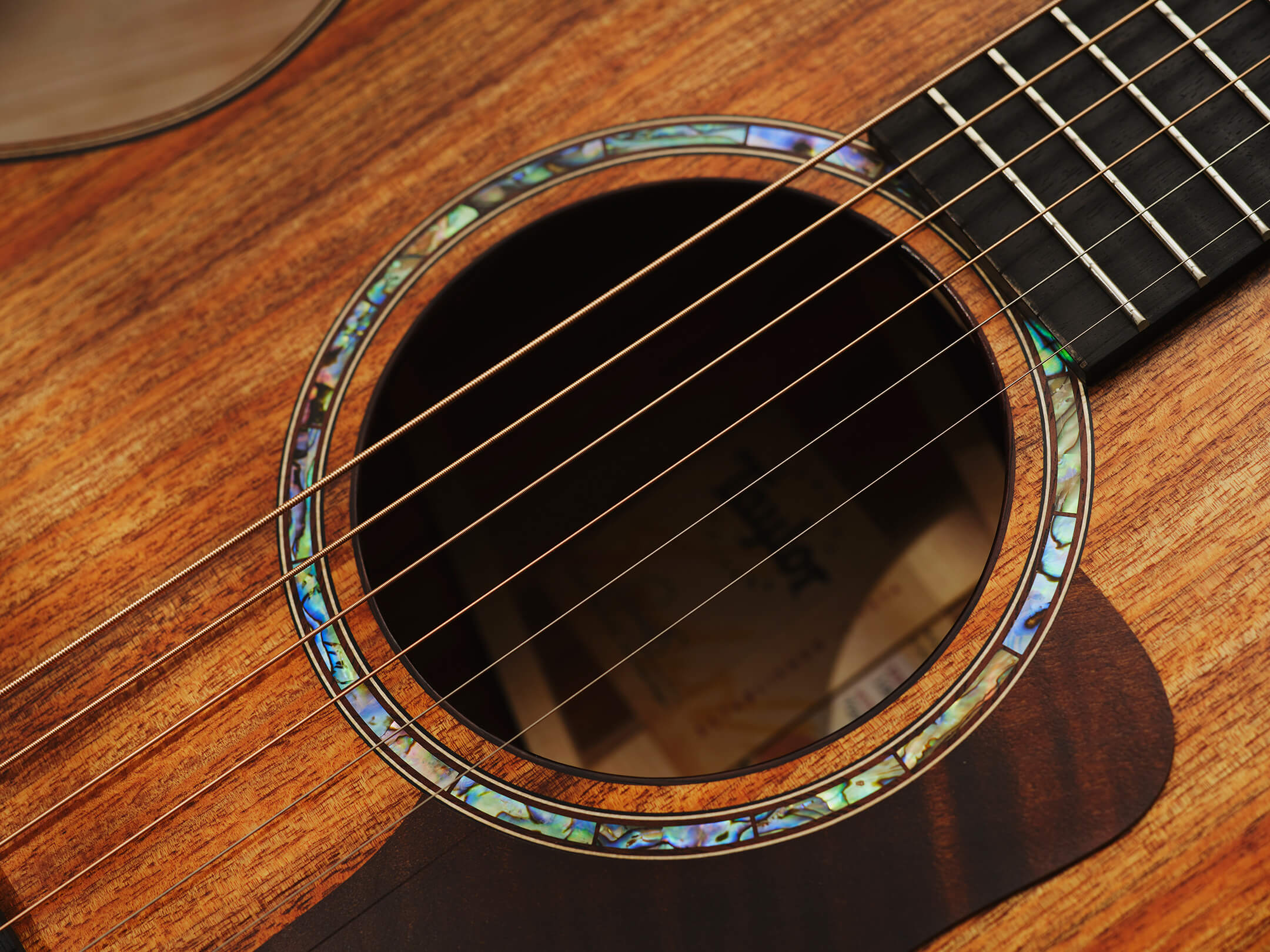
“Another difference maker was the choice of an ultra-thin, open-pore matte finish. As a result, there is less damping, so the sound is a little less filtered, a little livelier, than the sound of our Koa Series guitars, which have a somewhat thicker (by comparison) gloss finish that creates more of a damping effect.”
This thinner finish is one of the things that lets the guitars have a more “honest” sound, reflecting tactile subtleties that might otherwise be lost.
“These guitars retain the unique sweetness we associate with a guitar made from koa– especially that beautiful midrange – but with a more direct, punchy attack and natural response,” Andy adds. “The thinness of this finish doesn’t contribute as much damping or compression. You’ll hear more of the tactile elements of your playing – more of your fingertips, a pick touching the strings, the subtle nuance of a guitarist’s natural sound. I think of this as a player-reflective version of a koa guitar – you get more control over what you sound like.”
Planting the future
Sustainability is obviously a huge part of Taylor’s future, and the use of this non-conventional koa is one aspect of a much bigger picture. “It was our stewardship contracting sourcing model that brought this koa to our attention, so the value of the koa we are allowed to cut is reinvested, dollar for dollar, in various forest restoration projects,” Jim explains. “This helps to create a circular economy that supports the regeneration of native Hawaiian forests.”
“Additionally, Siglo Tonewoods is sponsoring ecological research with partner organisations like the Hawaiian Agricultural Research Center (HARC) and the US Forest Service Tropical Tree improvement Program. This led to the launch of a seed selection program in 2021, which aims to help reforest Hawaii with the genetics of superior koa trees.
These hardier trees – known as “plus” trees – stay healthier for longer. Seeds have been collected from 42 of them, and are currently being grown as seedlings. “The research has also identified many more “plus” trees whose seeds researchers will eventually be able to collect,” Jim adds. Through Siglo Tonewoods various planting initiatives, it has a plan in place to plant more than 150,000 trees over the next decade.
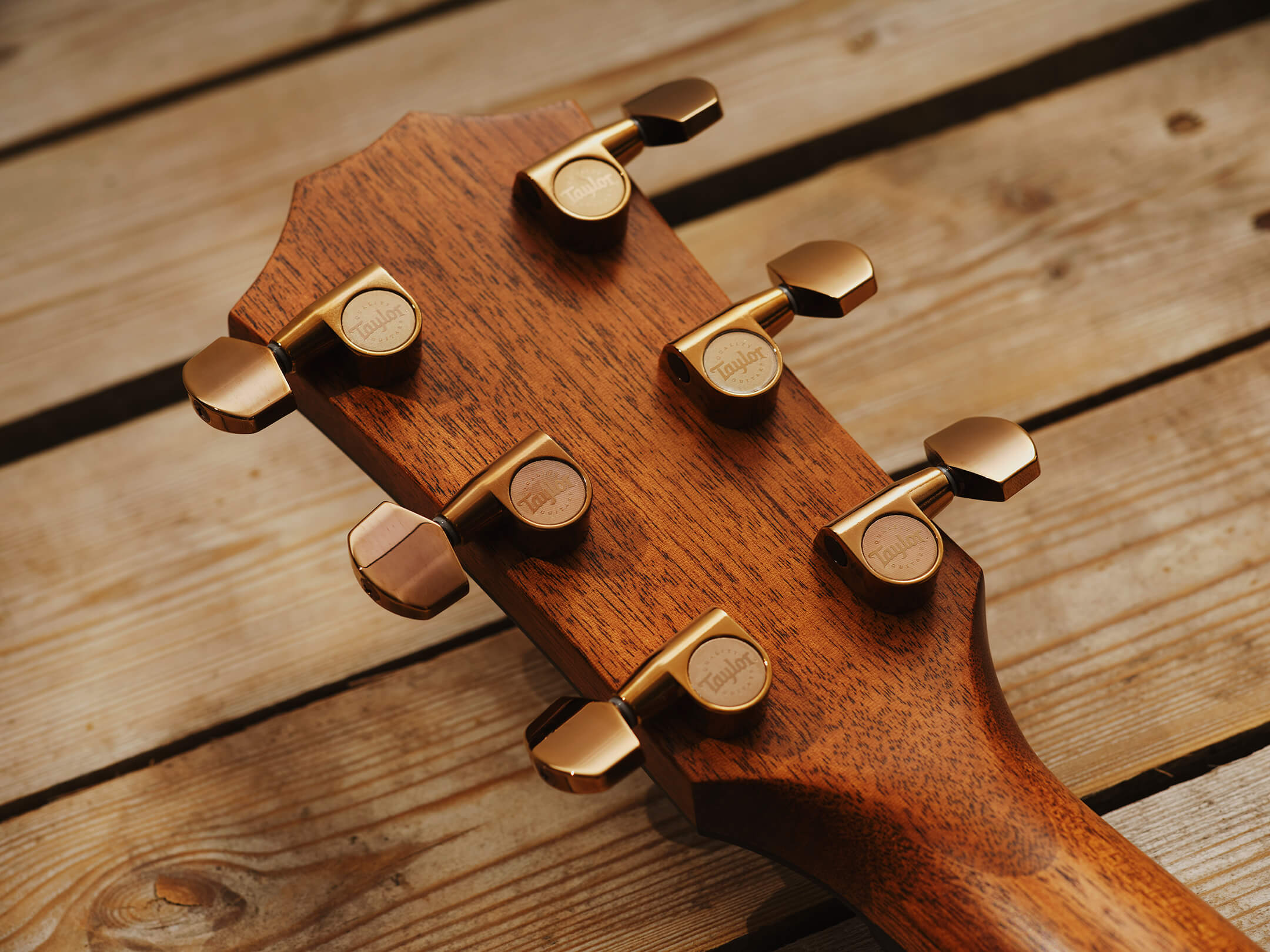
So what is the future for this particular grade of koa? “Currently this grade (which we’re calling select grade) is primarily used for the 700 Series,” Jim says, but hints that that series “may expand to include additional models over time.”
The 700 Series is, of course, not the only way to get a koa Taylor, as Jim reminds us: “We know that players love koa as a tonewood, and we use it in various places across our guitar line. Beyond our premium Koa Series, we offer koa models in our 200 Series, with the GS Mini and with the Baby Taylor. We’re happy that we’re able to offer a koa guitar across a range of models, price points and aesthetic packages.”
And with how much work Taylor is doing to increase the sustainability of Hawaiian koa, it’s unlikely that the koa found across Taylor’s lineup – and acoustic guitars in general – is going anywhere anytime soon.
